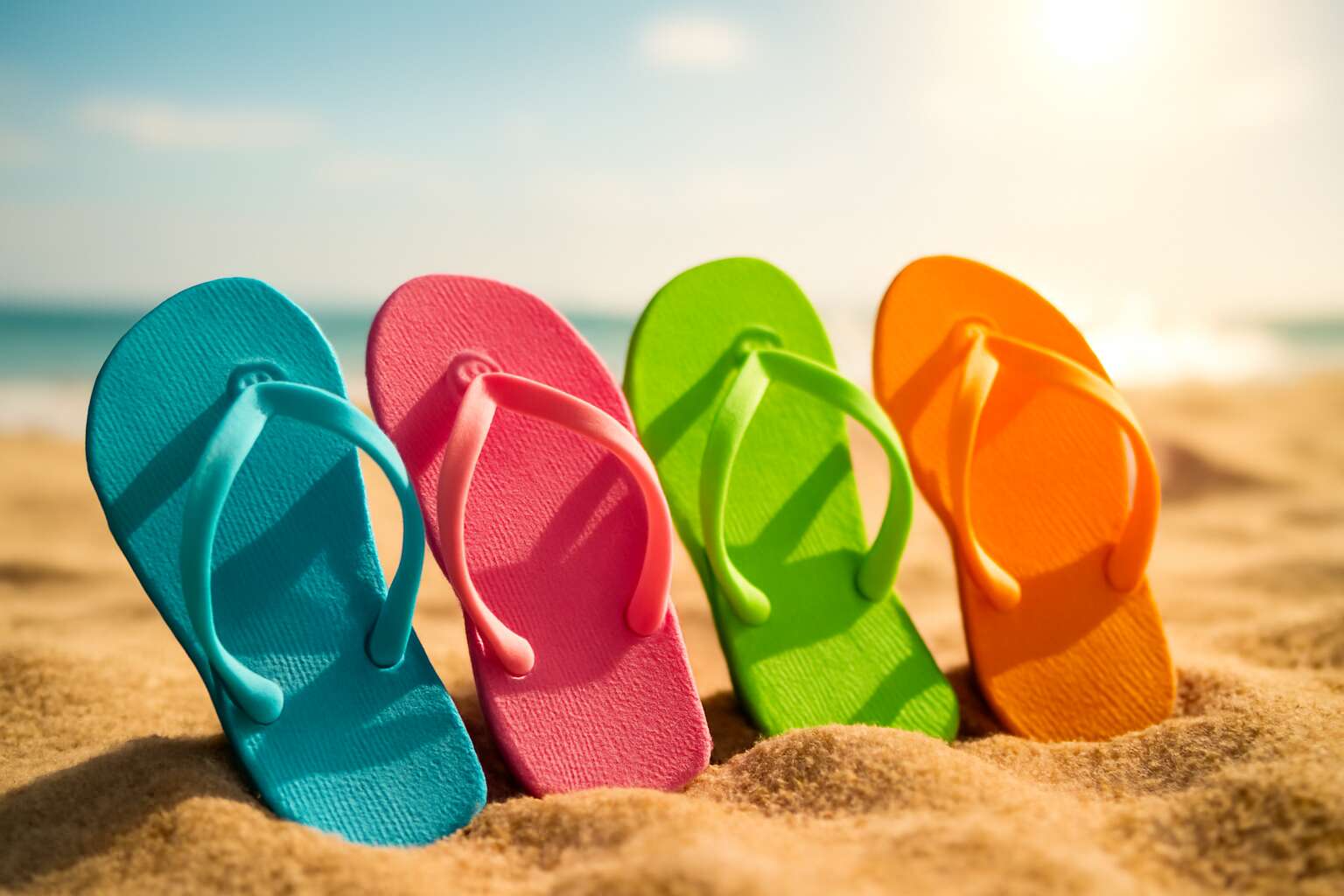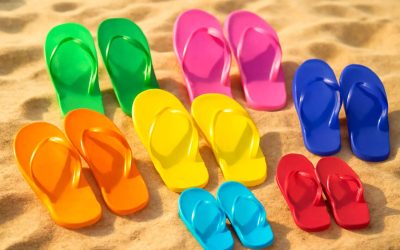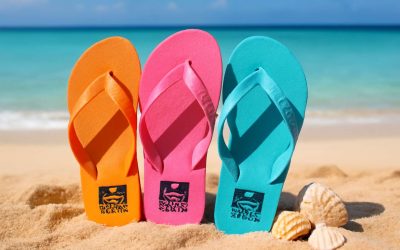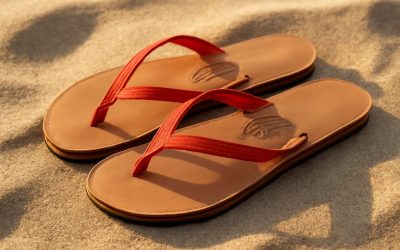Understanding Flip Flop Lifespan
Factors Influencing Durability
The lifespan of flip flops hinges on a symphony of factors that influence their durability, making them a fascinating subject for footwear enthusiasts. While these lightweight sandals seem simple, their longevity depends on material quality, frequency of use, and environmental exposure. For instance, flip flops made from high-grade rubber or EVA foam tend to withstand the South African climate better, resisting the wear and tear caused by sun, sand, and saltwater. Conversely, cheaper alternatives often succumb to cracking or sole detachment within a few months.
Understanding how long do flip flops last requires considering specific elements that accelerate deterioration. Excessive exposure to moisture, prolonged sun exposure, and rough terrains can significantly diminish their lifespan. To illustrate, I’ve observed that flip flops worn daily on rocky paths tend to last only a few months, whereas those reserved for beach days often endure longer. Assessing these factors helps anyone determine when it’s time to retire their favorite pair and look for a fresh set that will stand the test of time.
Common Materials Used in Flip Flops and Their Durability
Rubber Flip Flops
When considering how long do flip flops last, it’s essential to understand the materials that construct them. Rubber flip flops, for instance, are among the most common and widely used, primarily because of their affordability and flexibility. These flip flops are often made from ethylene vinyl acetate (EVA) or natural rubber, which offers a decent balance between comfort and durability.
Natural rubber flip flops tend to have a longer lifespan due to their resilience against wear and tear, especially in humid climates like South Africa’s. However, even the toughest rubber flip flops will eventually show signs of deterioration, such as cracking or losing their elasticity. To maximize lifespan, many brands incorporate reinforced soles or dual-layer designs, which can significantly extend how long do flip flops last under regular use.
- Type of rubber used
- Frequency of wear
- Exposure to harsh elements
EVA Foam Flip Flops
In the shadowed realm of footwear, the materials that forge flip flops whisper tales of endurance and decay. Among these, EVA foam emerges as a popular choice—its lightweight nature cloaked in durability. Yet, the question lingers like a ghost in the dark: how long do flip flops last when crafted from this mysterious substance? The answer depends on the subtle interplay of material, wear, and environment.
EVA foam flip flops possess a certain resilience, but even they are not invincible. Their porous structure can degrade over time, especially with constant exposure to the oppressive sun or relentless moisture. For those in humid climates like South Africa, this material’s lifespan is often shortened—cracks and tears creeping in faster than one might wish. To prolong their life, some brands reinforce EVA with tougher overlays or dual-layer construction, yet the inevitable march of time continues.
Understanding the durability of EVA flip flops requires appreciating their composition. Their soft, flexible nature makes them tempting, but this very trait invites early deterioration if not cared for. Ultimately, how long do flip flops last when made from EVA hinges on these delicate factors—wear frequency, exposure to elements, and the subtle dance between comfort and ruin.
Leather and Synthetic Materials
In the vast tapestry of footwear, the materials used in flip flops wield a silent influence over their lifespan. Among these, leather and synthetic materials stand out as enduring contenders, each with a story etched into their fibers. Leather flip flops, cherished for their timeless elegance and suppleness, can last for several seasons—sometimes up to two years—if cared for diligently. Their resilience hinges on the quality of the hide and how well they are maintained against the elements, especially in humid South African climates.
On the other hand, synthetic materials such as polyurethane or PVC are often chosen for their affordability and flexibility. These materials tend to age faster—cracking and losing their shape after about six to twelve months with frequent use. To better understand the durability of synthetic flip flops, consider their composition, which often includes layered or reinforced elements. These can extend their lifespan but rarely match the longevity of genuine leather.
When assessing how long do flip flops last, it’s essential to recognize the role of environmental exposure. For instance, relentless sun, moisture, and rough terrains accelerate wear and tear. The choice of material—whether leather or synthetic—serves as a vital determinant in this ongoing saga of durability. Keep in mind, the durability of flip flops is not solely dictated by material but also by how they are worn and cared for, making each pair’s story uniquely theirs.
Signs Your Flip Flops Need Replacing
Visible Wear and Tear
There’s something undeniably satisfying about slipping into a pair of well-worn flip flops on a sunny South African afternoon. But as the months pass, signs of wear and tear inevitably creep in, prompting the question: how long do flip flops last? The answer depends on a variety of factors, but the most telling indicator is visible deterioration. When your flip flops begin to show frayed straps, cracked soles, or uneven wear patterns, it’s a clear sign they’ve reached their expiration date.
More often than not, the lifespan of flip flops is etched into their appearance. Look out for:
- Splits or tears in the sole or straps
- Worn-down tread that no longer provides grip
- Deformation of the footbed that affects comfort
These visual cues are not just superficial; they reveal how long do flip flops last in terms of both safety and comfort. Ignoring these signs can lead to discomfort or even injury, especially when the sole becomes too thin to absorb shocks effectively. So, keep a close eye on these indicators and replace your flip flops before they lose their supportive qualities entirely.
Loss of Comfort and Support
When your flip flops start feeling more like medieval torture devices than comfortable summer shoes, it’s a clear sign they’re nearing the end of their lifespan. Loss of comfort and support is one of the most obvious indicators of how long do flip flops last. If you notice that each step feels like walking on a bed of nails or your arch support has vanished into thin air, it’s time to bid farewell.
Over time, the cushioning and structural integrity diminish, turning your once-glorious flip flops into precarious landmines of discomfort. If your footbed no longer contours to your foot or the straps threaten to snap at any moment, it’s a sign they’ve served their purpose. Keep an eye out for:
- Wobbly or sagging footbed
- Increased pressure points causing pain
- Straps that no longer hold your foot securely
Remember, wearing flip flops that have lost their support not only ruins your comfort but can also lead to foot injuries. So, don’t ignore these warning signs—they’re the flip flop’s way of telling you it’s time for an upgrade!
Damage from Use
In the dance of summer days and sun-drenched evenings, flip flops often serve as our loyal companions. Yet, like all good things, their lifespan is finite—a fleeting moment in the grand tapestry of warm-weather comfort. So, how long do flip flops last? The answer hinges on more than just time; it’s a story woven with wear, tear, and the relentless march of use.
Damage from use manifests as subtle signals that whisper warnings—faded colors, frayed straps, or a sole that no longer grips the ground with the same tenacity. Often, these signs appear gradually, like a sunset slipping beyond the horizon. The footbed may become uneven, or the tread might wear thin enough to turn each step into a gamble. When the straps threaten to snap or wobble with every stride, it’s a clear sign your flip flops have written their final chapter.
- The sole has thinned to the point where it feels like walking on a memory of comfort.
- The straps are cracked or stretched beyond recognition, no longer holding your foot with security.
- Visible signs of damage—such as tears or holes—disrupt the integrity of the footwear.
Understanding these signs isn’t merely about maintenance; it’s about safeguarding your comfort and health. Knowing when your flip flops have reached their limit ensures you step forward, not backward, into safer, more supportive summer footwear. After all, the question of how long do flip flops last is not just about years but about preservation of joy and well-being beneath the African sun.
How to Extend the Life of Your Flip Flops
Proper Cleaning and Storage
The lifespan of flip flops is often underestimated, yet the question of how long do flip flops last remains central to every wearer’s mind, especially in South Africa’s diverse climate. Proper cleaning and storage are not merely maintenance routines; they are vital rituals that preserve the integrity of these seemingly simple footwear. When neglected, dirt and moisture can accelerate deterioration, causing premature cracking or loss of support, but with attentive care, their durability can be significantly extended.
To truly maximize your flip flops’ longevity, consider a few essential practices. After each wear, gently rinse them with cool water to remove accumulated grime, and allow them to air dry completely—avoiding direct sunlight which can weaken materials. For storage, keep your flip flops in a cool, dry place, away from extreme temperatures and humidity, which can hasten breakdown. Incorporating a simple routine—such as wiping off debris and storing them in breathable containers—can dramatically influence how long do flip flops last, ensuring they remain comfortable and supportive for seasons to come.
Avoiding Common Mistakes
In the shadowed corners of our daily routines, flip flops quietly betray their secrets—reveling in the silent toll of neglect. When pondering how long do flip flops last, many overlook the subtle signs that mark their slow descent into oblivion. Avoiding common mistakes becomes an act of preservation, a ritual that guards against the relentless march of time and use.
One of the most insidious threats is exposing flip flops to relentless moisture or leaving them in direct sunlight for extended periods. These acts weaken the delicate bonds of material, hastening their demise. Instead, embrace a routine of gentle cleaning—rinsing away dirt and allowing them to air dry in a shaded sanctuary. Remember, storing flip flops in breathable containers and a cool, dry environment can significantly extend their life.
- Limit exposure to harsh elements.
- Avoid walking on rough surfaces that accelerate wear.
- Rotate between pairs to distribute the strain evenly.
Rotating Footwear
In the shadows of our sun-drenched days, flip flops whisper secrets of their fleeting existence. To prolong their silent vigil, one must master the art of rotation—a ritual that keeps their fragile fabric from succumbing to relentless wear. When pondering how long do flip flops last, it becomes clear that a simple act like rotating footwear can dramatically extend their lifespan.
By alternating pairs, you distribute the strain of daily use, preventing localized stress that accelerates deterioration. Consider establishing a rotation schedule, perhaps switching between three or four pairs over the course of a week. This practice not only preserves the structural integrity but also maintains the comfort that drew you to them in the first place.
- Switch flip flops regularly to avoid overuse of a single pair.
- Store them in a cool, shaded environment to prevent material fatigue.
- Limit exposure to harsh surfaces that can abrade or weaken the sole.
Ultimately, the longevity of flip flops hinges on this delicate dance of care and restraint—a dance that ensures your trusted companions endure through many sun-soaked seasons. After all, understanding how long do flip flops last is not just about material; it’s about the silent pact to cherish their brief but radiant existence.
Average Lifespan of Different Types of Flip Flops
Everyday Use
In the shadowed realm of everyday footwear, the question lingers like a whisper in the dark: how long do flip flops last? Their lifespan can be a fleeting ghost, fading with each step taken under the scorching sun or through damp city streets. For the average pair of flip flops used regularly in South Africa, their quiet demise often occurs between six months to a year, a testament to the relentless assault of wear and tear.
Different types of flip flops have their own tales to tell. Rubber varieties, resilient yet vulnerable, typically last around 6 to 8 months before their once sturdy soles begin to crumble. EVA foam flip flops, with their airy, fragile nature, tend to surrender sooner—often within 3 to 6 months. Leather and synthetic materials, if treated with care, can stretch their lifespan to about a year or more, but neglect accelerates their decay.
Understanding the lifespan of flip flops is crucial, especially when confronting their inevitable decline. An unspoken truth remains: how long do flip flops last is a dance between material resilience and the relentless passage of time. Keep an eye on their condition, and you’ll witness the silent erosion of comfort and support—an ominous sign that it’s time to bid farewell to your beloved summer companion.
Sport and Performance Flip Flops
When considering the lifespan of sport and performance flip flops, the answer hinges on both their construction and the intensity of use. Unlike casual beachwear, these specialized flip flops are engineered to endure more rigorous activity, yet their durability remains finite. Typically, a well-crafted pair of sport flip flops can last between 6 to 12 months, provided they are used regularly on rough terrains or during high-impact activities.
Factors such as the quality of materials and frequency of use play pivotal roles. For instance, flip flops made from high-density rubber or reinforced synthetics tend to outlast their more fragile counterparts. An interesting observation is that performance flip flops with thicker soles and sturdy straps often outperform lighter, less durable models—sometimes extending their lifespan to nearly a year or more.
- Material resilience
- Frequency of activity
- Environmental conditions
Understanding these nuances helps in predicting how long do flip flops last, especially for South African consumers who seek longevity amidst varied climates and terrains. The magic of their lifespan ultimately lies in the delicate balance between craftsmanship and the relentless passage of time, making each step a small adventure into durability.
Luxury and Designer Flip Flops
Luxury and designer flip flops are the crème de la crème of footwear, often turning heads with their impeccable craftsmanship and fashionable flair. But, just like any other footwear, their lifespan hinges on quality and usage. Typically, these high-end sandals can last anywhere from 6 months to over a year, especially if you’re a careful wearer who avoids flipping through mud puddles or dancing in the rain.
What sets luxury flip flops apart is their choice of premium materials—genuine leather, soft suede, or high-grade synthetics—that tend to age gracefully. However, even the most opulent designs aren’t immune to the wear and tear of everyday life. The key to maximizing how long do flip flops last in this category is understanding that their durability is a delicate dance between craftsmanship and the chaos of real-world usage.




0 Comments